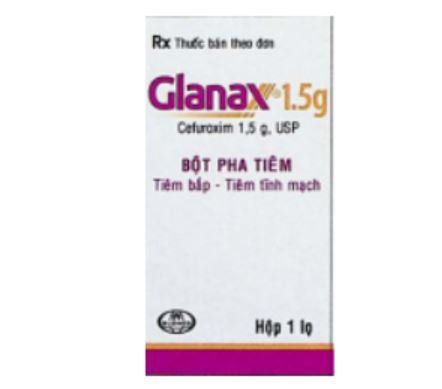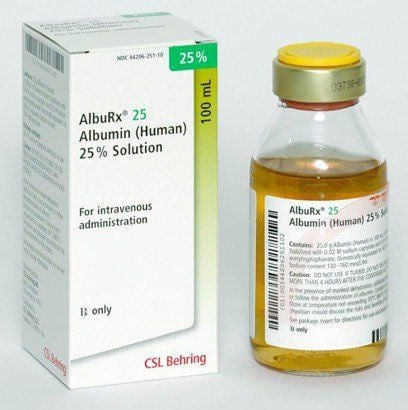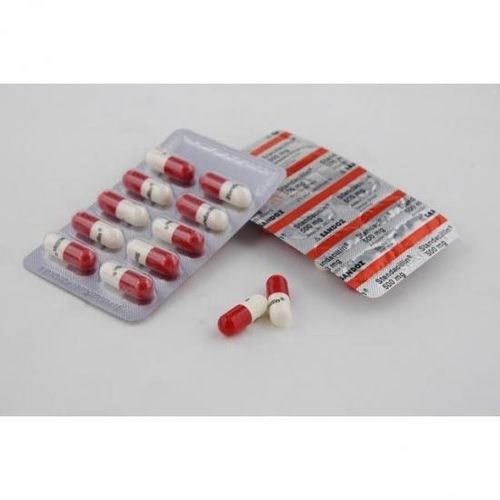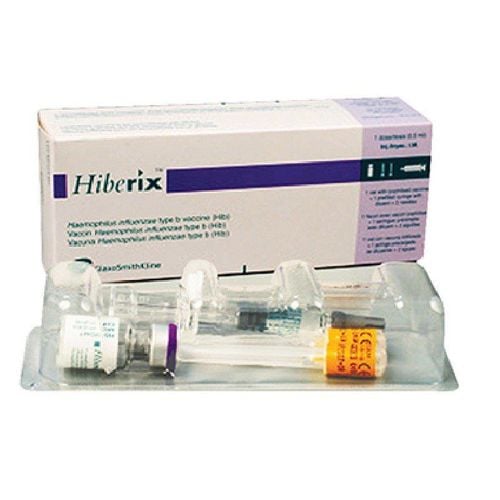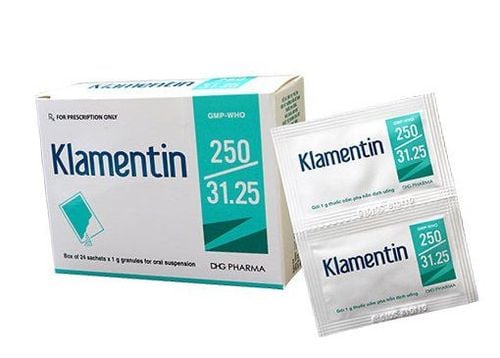This is an automatically translated article.
Sulbaci belongs to the group of drugs that treat parasites, bacteria, viruses and fungi. The drug is prepared in the form of powder for injection, packing: Box of 1 vial. Refer to some information about Spmerocin in the article below to help you know how to use the drug appropriately.1. Ingredients of the drug Sulbaci
Ingredients of the drug Sulbaci include:
Ampicillin sodium; Sulbactam sodium. Ampicillin is a semi-synthetic antibiotic belonging to the Beta-lactamines family, Penicilline type A group, with low toxicity but broad antibacterial spectrum. Ampicillin acts on the multiplication of bacteria, thereby inhibiting the synthesis of mucopeptides of bacterial cell membranes.
Antibacterial spectrum of Ampicillin:
Sensitive species: Streptococcus A; Meningococcus; Leptospira; Streptococcus mitis, Sanguis; Bordetella pertussis; Brucella; Streptococcus D faecalis; Streptococcus pneumoniae; Corynebacterium diphtheriae; Escherichia coli; Proteus mirabilis; Listeria monocytogenes; Clostridium; Fusobacterium; Salmonella; Shigella ; Haemophilus influenzae; Vibrio cholerae; Staphylococcus aureus (not beta-lactamase resistant). Resistance types: beta-lactamase-resistant Staphylococcus; Klebsiella; Enterobacter; Pseudomonas; Mycoplasma; Serratia; Proteus rettgeri; Providencia; Chlamydia ; Rickettsia; Acinetobacter. Absorption:
Ampicillin is well absorbed from the gastrointestinal tract rapidly and almost completely. When a 500mg dose of Ampicillin is administered intramuscularly, peak plasma concentrations are reached within 1 hour, and peak plasma concentrations are reached after 2 hours after a 500mg dose of 500mg. Distribution:
Approximately 20% of Ampicillin is bound to plasma proteins. Ampicillin has a large volume of distribution, diffusing through the fetal circulation, the placenta, and into the amniotic fluid. However, Ampicillin does not cross the blood-brain barrier. Elimination:
Ampicillin is rapidly eliminated via renal tubules (80%) and bile ducts.
2. Indications for taking Sulbaci
With the above active ingredients, Sulbaci is used in the treatment of infections caused by bacteria sensitive to the drug such as:
Blood infections; Meningitis ; Peritonitis ; Biliary tract infections; Gastrointestinal tract infections; Bone and joint infections; Skin and soft tissue infections; Respiratory infections; Ear - nose - throat infections; Renal - urinary tract infections; Genital infections ; Prophylaxis of infection in surgery.
3. Dosage, how to use Sulbaci
Intramuscular injection or intravenous infusion:
Adults: Treat mild infections with a dose of Sulbaci 1.5 - 3g/day; moderate bacterial infections up to 6g/day; For severe infections, the dose is 12g/day, divided into 3-4 times. The maximum dose is 4g sulbactam/day. Children and infants: 150mg/kg/day, divided into 3-4 times, especially for infants <1 week, divided into 2 times/day. Prophylaxis of surgical infections: 1.5 - 3g injection at induction of anesthesia, repeated every 6-8 hours/24 hours after surgery. Sulbaci dosage above is for reference only. The specific dose of Sulbaci will depend on the condition and the progression of the disease. To get the right dose of Sulbaci, patients need to consult their doctor/pharmacist.
4. Contraindications to taking Sulbaci
Sulbaci is contraindicated in the following cases:
Patients with hypersensitivity to penicillin group antibiotics; Hypersensitivity to the ingredients, active ingredients in the drug Sulbaci Contraindications are understood as absolute contraindications, which means that for any reason, contraindications can be flexibly used with Sulbaci.
5. Drug interactions
Sulbaci reduces the effectiveness of oral contraceptives. Some other interactions are not known, so please inform your doctor/pharmacist of all medications, supplements, vitamins... you are taking before using Sulbaci.
6. Side effects of the drug Sulbaci
Besides the therapeutic effect, patients using Sulbaci may also experience some of the following side effects:
Diarrhea; Pain at the injection site; Allergic reaction. During the course of treatment, if there are any abnormal symptoms suspected of using Sulbaci, the patient should notify the treating doctor/pharmacist for timely treatment.
Above is important information about Sulbaci, patients should carefully read the instructions for use and use according to the dose prescribed by the doctor to achieve the best effect.




